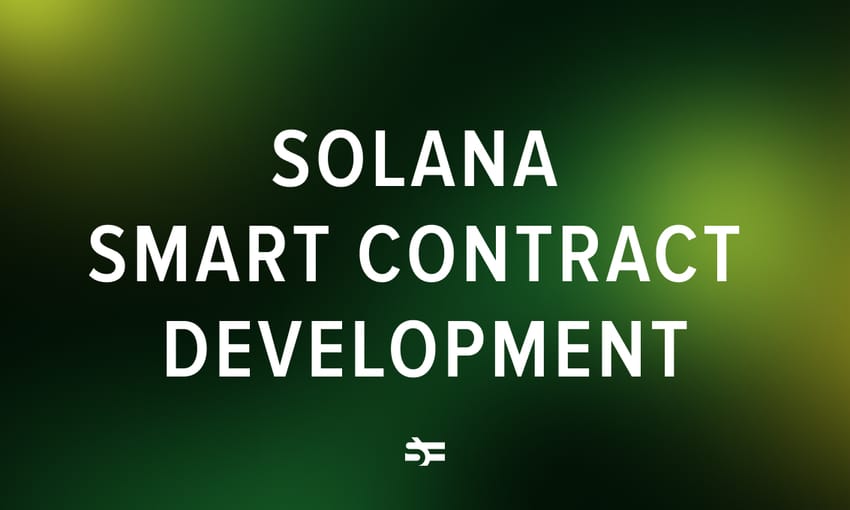In this article, we’ve collected information on how AI has transformed manufacturing by automating routine tasks with never-sleeping machines and reducing operational costs. We will share some of the most promising use cases and look at the opportunities and challenges of implementing AI.
The state of AI adoption in manufacturing
The worldwide market for artificial intelligence in manufacturing stood at a valuation of US $17.5 billion in 2022 and is projected to surge to US $267.3 billion by 2030, expanding at an annual growth rate of 40.6% from 2024 to 2030.
According to Deloitte, the manufacturing sector is set to produce around 1,812 petabytes (PB) of data annually, surpassing the data output of the communications, finance, retail, and a range of other industries.
The increasing demand for AI in the American manufacturing sector is driven by the need to efficiently handle escalating production volumes and complexity of data. This movement is further emphasized by the adoption of cutting-edge manufacturing technologies and principles of Industry 4.0, as well as a shift toward smart factories.
In Europe, the robotics market in various sectors, including healthcare, manufacturing, and logistics, is experiencing significant growth, supported by government backing. Additionally, there is extensive collaboration between universities and businesses willing to innovate.
Key areas of AI implementations in manufacturing
Some of the key areas where AI is finding applications in production are predictive maintenance, product modeling, quality monitoring, and supply chain management.
Predictive maintenance: By analyzing data from equipment sensors, AI algorithms can predict failures before they occur, decreasing repair costs, minimizing downtime, and extending equipment lifespan.
- BASF has introduced predictive maintenance to improve the coordination of maintenance and production processes. The AI application forecasts the operational status of crucial equipment and parts in manufacturing plants, such as compressors and heat exchangers. It uses sensors to collect real-time data to analyze and predict how these components will function.
- Duke Energy Renewables, which operates wind and solar farms throughout the US, has implemented advanced analytics and machine learning to automate the identification and detection of malfunctioning contactors in some of their wind turbines.
Product development: Manufacturers are leveraging AI to accelerate product development. This also significantly reduces the costs associated with bringing new products to market.
-
Unilever employs a digital twin to predict the best technological parameters for laundry detergent. By implementing AI, the company has removed the need for physical testing of new formulas, thereby speeding up product launches and decreasing resource usage.
-
Procter & Gamble uses AI to develop cleaning products tailored to specific requirements, such as reduced foaming. By utilizing digital twins and 3D modeling, the company has increased the development speed of cleaning products by 70%.
Quality inspection: AI-driven visual inspection systems are transforming quality control processes. These systems can detect defects with greater accuracy and speed than human inspectors, ensuring product quality and regulatory standards compliance.
- AB InBev, producer of Budweiser, Stella Artois, and Corona, has implemented SenseAI, a machine learning system designed to assist brewers in enhancing the quality and taste of their beverages. This system employs real-time data to analyze the brewing process, including CO2 levels and the duration of each stage, to forecast any discrepancies in the characteristics of the final product.
- On Mars production lines, the appearance of M&M candies is monitored by AI as they travel along the conveyor belt. Image recognition technology aids employees in evaluating the candies’ suitability for distribution.
Supply chain management: By integrating AI into supply chain management, producers can address warehousing and transportation challenges with greater speed and efficiency.
- Subsidiaries of Koch Industries, one of the largest privately-owned conglomerates in the US, employ AI to enhance their supply management. Whereas traditional procurement practices often categorize suppliers by general spending categories, AI uncovers alternative sources, often among existing partners, reducing the reliance on lengthy processes for obtaining quotes. The AI algorithm streamlines RFQ by using historical data to pre-fill new requests with key details such as lead times and costs, and then emails them to suppliers for approval. A simple one-click submission is used if the provider agrees with the AI’s quote. Any adjustments made by the supplier help the algorithm improve its accuracy. This efficient approach can save suppliers up to 60% to 90% of the time usually required for RFQ completion, while speeding up warehousing.
Demand planning and pricing: Machine learning algorithms analyze vast datasets to predict future demand with unprecedented accuracy. This enables manufacturers to optimize production schedules, reduce overstocking and inventory costs, and improve customer satisfaction.
- Danone has implemented a machine learning system to anticipate fluctuations in demand and improve planning processes. The company has achieved a 20% decrease in forecasting errors, a 30% drop in lost sales, and a 10-point increase in return on investment (ROI) for promotions.
How AI adoption helps overcome production challenges
Many manufacturers now incorporate AI across all production stages and various operational processes, continually seeking to expand its application. Below are further examples of these practices.
Schaeffler
Schaeffler AG, an automotive supplier, utilizes the Siemens Industrial Copilot to assist engineers in generating reliable code for programming industrial automation systems, including robots. The Industrial Copilot is an AI-powered assistant developed by Siemens in collaboration with Microsoft, to enhance human-machine cooperation in manufacturing. This tool enables users to quickly generate, optimize, and debug complex automation code, reducing simulation times from weeks to minutes. Maintenance technicians can use natural language to receive detailed repair instructions, and engineers can access simulation tools easily.
General Motors
General Motors recently evaluated “Dreamcatcher,” a machine learning-based system aimed at improving prototyping efficiency. This system was applied in the design of a single-piece seat belt bracket. Remarkably, this new design proved to be 40% lighter and 20% stronger than the original version composed of multiple components.
Moreover, by employing computer vision technology in assembly line, General Motors has enhanced its capability to detect early signs of component failure. In a particular trial, this technology successfully identified 72 failures out of 7,000 robots.
Bridgestone
Bridgestone uses a tire assembling technology The EXAMATION that leverages AI to optimize the production process. It employs sensors to collect data on 480 quality aspects for each tire, allowing real-time control over the assembly conditions. This system not only enhances precision but also doubles productivity.
Bridgestone’s Virtual Tyre Development technology is another example of AI application, where digital tire models are designed and tested virtually. This approach saves around 200 tires per project, significantly reducing raw material usage and CO2 emissions during the development phase. It also allows for testing more variants of a tire and reduces product development time and outdoor fleet tire tests by up to 50%, cutting time to market and costs.
ABB
In 2022, ABB unveiled its smallest industrial robot to date, paving the way for quicker, more adaptable, and higher quality manufacturing of smart wearable devices. The new IRB 1010, distinguished by its small footprint, top-of-the-line carrying capacity, and unmatched precision, enabled electronics producers to enhance their output of various devices through automation. This includes watches, earbuds, sensors, and fitness tracking devices.
Advanced AI tools and technologies in manufacturing
In this section, we will explore some of the most promising AI-driven technologies that are setting new benchmarks in the manufacturing industry. While generative design, collaborative robots (cobots), and lights-out factories are only now being incrementally integrated into manufacturing processes, they are expected to become more prevalent in the near future.
Generative design
Generative design is similar to generative AI tools like ChatGPT and Dall-E, but with a focus on product design rather than text or images. By inputting specific requirements such as materials, dimensions, weight, manufacturing methods, and cost, this technology enables design engineers to create a multitude of design options for new products. These options are then evaluated to select the most viable for production, significantly accelerating the development cycle.
Generative design is particularly transformative in 3D printing, where it excels at creating complex shapes and structures. This has led to the development of components that are not only cost-effective and lightweight but also superior in strength. As a result, generative design is improving the quality and efficiency of products across a range of industries, including automotive, aerospace, and the construction of modular homes and buildings.
Cobots
Collaborative robots, or cobots, work in tandem with human workers, acting as an additional support. Unlike autonomous robots that are programmed for a single, repetitive task, cobots have the capacity to learn a variety of tasks. Their ability to sense and avoid obstacles allows them to safely collaborate with humans in shared workspaces. In the automotive industry, for instance, cobots can be found lifting and positioning heavy car components for assembly by human workers. Additionally, in large warehouse environments, cobots efficiently locate and fetch items.
Lights-out factories
The concept of a lights-out factory, though still emerging, demonstrates the significant potential of AI in manufacturing. A lights-out factory is the pinnacle of manufacturing automation, where the entire production process can unfold in the absence of human intervention—literally with the lights out— allowing for a consistent 24/7 production cycle. Such factories are based on advanced robotics, AI, and machine learning technologies, collaboratively managing tasks that range from assembly and quality control to packaging.
Conclusion
Future advancements in AI promise even greater capabilities, including robots that adapt to a wide range of tasks with minimal training. Efforts are underway to develop AI that can generalize its learning across different domains, similar to human learning. This means that it’s necessary for manufacturers to either establish their own AI development divisions or collaborate with expert partners for professional support in new ideas and strategies.
Companies that adopt AI early are likely to see significant benefits, with a substantial difference in cash-flow change between AI adoption “front-runners” and “followers”.
To learn more about AI adoption, read: AI Integration in Oil and Gas








